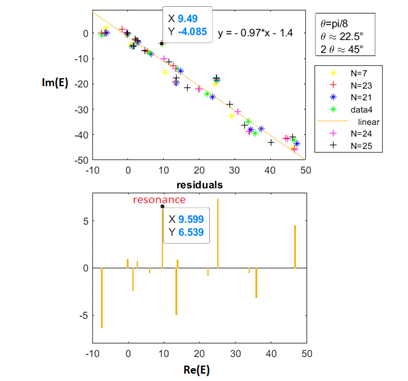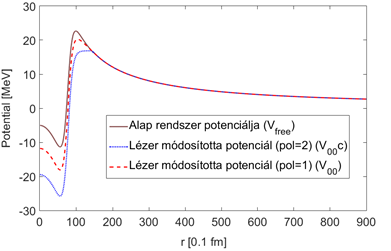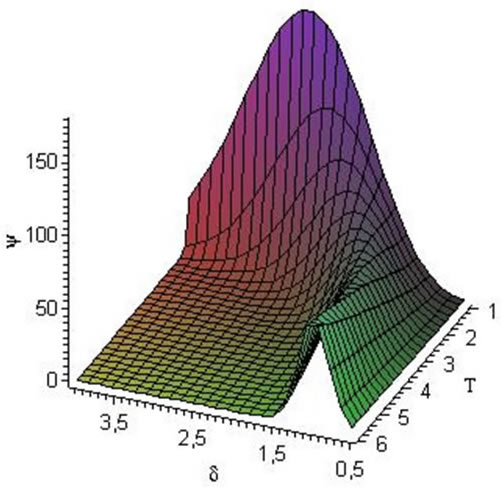- The study of nuclear decay processes (alpha, beta and gamma decays) in intense electromagnetic fields.
The description of low energy nuclear reactions in intense electromagnetic fields.
Active research:
- The description of alpha-tunneling in extreme high intensity laser fields within the framework of non-Hermitian quantum mechanicsand the (t,t')-formalismwith three dimensional models.
Planned research in the near future:
- Formulating a feasible model to describe the process of beta-decay with special regards to the Electron Capture-process in the presence of an extreme high intensity coherent electromagnetic field using quantum field theoretical approaches.

Figure 1.The discretized total spectrum of the non-Hermitian Hamiltonian after a Complex Scaling transformation, indicating the complex resonance energy corresponding to a decaying state with an eigenfunction which becomes regularized upon the Complex Scaling transformation.

Figure 2.The three dimensional Woods-Saxon potential as a function of the distance measured from the nuclear radius (r). Dashed lines indicate the alteration of the nuclear potential due to the presence of the laser field with laser intensity I=5 × 10 19W/cm 2and photon energy Eph=100 eV.

Figure 3.The change in the probability of internal conversion as a function of the relative pulse length (T) and the relative photon energy (d).

